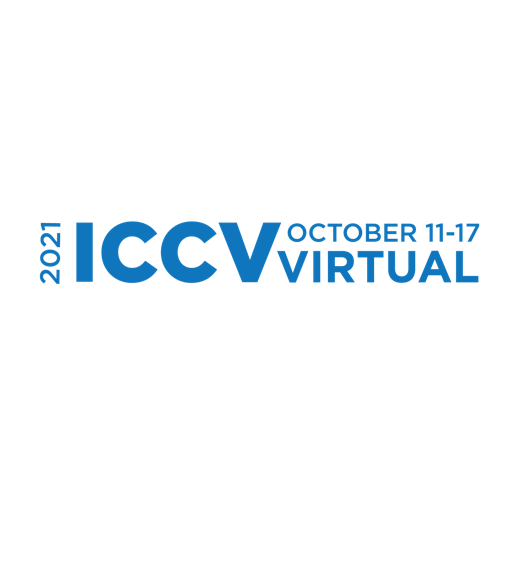
iccv 1988 论文列表Second International Conference on Computer Vision, ICCV 1988. Tampa, Florida, USA, 5-8 December, 1988, Proceedings. |
On The Sensitivity Of The Hough Transform For Object Recognition.
Optimal Morphological Approaches To Image Matching And Object Detection.
Error Of Fit Measures For Recovering Parametric Solids.
The Creation Of Structure In Dynamic Shape.
Matching Perspective Images Using Geometric Constraints And Perceptual Grouping.
Shape From Angles Under Perspective Projection.
Singularities Of Principal Direction Fields From 3-D Images.
Measuring Image Flow By Tracking Edge-lines.
The Feasibility Of Motion And Structure Computations.
Robust Depth Estimation From Optical Flow.
Motion And Depth From Binocular Orthographic Views.
Information In The Geometric Structure Of Retinal Flow Fields.
A Nonlinear Approach To The Motion Correspondence Problem.
Computational Aspects Of Determining Optical Flow.
A constraint-based system for interpretation of aerial imagery.
Robust Window Operators.
Pyramid Implementation Of Optimal Step Conjugate Search Algorithms For Some Computer Vision Problems.
The Organization Of Curve Detection: Coarse Tangent Fields And Fine Spline Coverings.
Organization Of Smooth Image Curves At Multiple Scales.
Coping With Discontinuities In Computer Vision: Their Detection, Classification, And Measurement.
Surface Reconstruction By Dynamic Integration Of Focus, Camera Vergence, And Stereo.
Eye Fixation And Early Vision: Kinetic Depth.
Modal Control Of An Attentive Vision System.
Reconstruction Of Consistent Shape From Inconsistent Data: Optimization Of 21/2d Sketches.
Aspect Graphs And Nonlinear Optimization In 3-D Object Recognition.
Creating The Perspective Projection Aspect Graph Of Polyhedral Objects.
Recognize The Similarity Between Shapes Under Affine Transformation.
The Alignment Of Objects With Smooth Surfaces.
Reconstruction Of Surfaces Of 3-D Objects By M-array Pattern Projection Method.
A Color Reflectance Model And Its Use For Segmentation.
Parallel Optical Flow Using Local Voting.
Optimal Computing Of Structure From Motion Using Point Correspondences In Two Frames.
Translating Optical Flow Into Token Matches And Depth From Looming.
Egomotion And The Stabilized World.
Space-time Sampling With Motion Uncertainty: Constraints On Space-time Filtering.
Using Symmetries For Analysis Of Shape From Contour.
Shape Information From Shading: A Theory About Human Perception.
Geometry From Specularities.
Perceiving Structure From Motion: Failure Of Shape Constancy.
Temporal Edges: The Detection Of Motion And The Computation Of Optical Flow.
Optic Acceleration.
Multigrid Bayesian Estimation Of Image Motion Using Stochastic Relaxation.
The Motion Coherence Theory.
Surface Reconstruction From Image Sequences.
Admissibility Of Constraint Functions In Relaxation Labeling.
Structural Saliency: The Detection Of Globally Salient Structures using A Locally Connected Network.
Multiple Shape-from-texture Into Texture Analysis And Surface Segmentation.
An Adaptive Clustering Algorithm For Image Segmentation.
Unsupervised Bayesian Estimation For Segmenting Textured Images.
Detecting Specular Reflections Using Lambertian Constraints.
Color Image Analysis With An Intrinsic Reflection Model.
Occlusion-sensitive Matchiing.
A System For 3-D Workplaces Recognition.
Towards The Automatic Generation Of Recognition Strategies.
Image Description Via The Multiresolution Intensity Axis Of Symmetry.
Learnable And Non-learnable Visual Concepts.
Aligning A Model To An Image Using Minimal Information.
On The Congruence Of Noisy Images To Line Segment Models.
Geometric Hashing: A General And Efficient Model-based Recognition Scheme.
Applying Sensor Models To Automatic Generation Of Object Recognition Programs.
The Combinatorics Of Object Recognition In Cluttered Environments Using Constrained Search.
Estimating Motion From Sparse Range Data Without Correspondence.
Polynomial Methods For Structure From Motion.
Using Flow Field Divergence For Obstacle Avoidance: Towards Qualitative Vision.
Analysis Of A Sequence Of Stereo Scenes Containing Multiple Moving Objects Using Rigidity Constraints.
A Theory On Optical Velocity Fields And Ambiguous Motion Of Curves.
Structure And Motion From Two Perspective Views Via Planar Patch.
Parallel Depth Recovery By Changing Camera Parameters.
Application Of Qualitative Depth And Shape From Stereo.
Brightness-based Stereo Matching.
The Trinocular General Support Algorithm: A Three-camera Stereo Algorithm For Overcoming Binocular Matching Errors.
Towards Real-time Trinocular Stereo.
Self-calibration Of Stereo Cameras.
Synergistic Smooth Surface Stereo.
Morphological Feature Detection.
Morphological Algorithms For Computing Non-planar Point Neighborhoods On Cellular Automata.
Evolution Properties Of Space Curves.
Using Dynamic Programming For Minimizing The Energy Of Active Contours In The Presence Of Hard Constraints.
Optimal Corner Detector.
Determining The Optimal Weights In Multiple Objective Function Optimization.
A New Model-based Stereo Approach For 3D Surface Reconstruction Using Contours On The Surface Pattern.
Two-view Matching.
How the Delaunay Triangulation Can Be used For Representing Stereo Data.
Representing Oriented Piecewise C2 Surfaces.
Efficiently Computing And Representing Aspect Graphs Of Polyhedral Objects.
Recovering Shape Deformation By An Extended Circular Image Representation.
A Novel Approach To Colour Constancy.
Color From Black And White.

